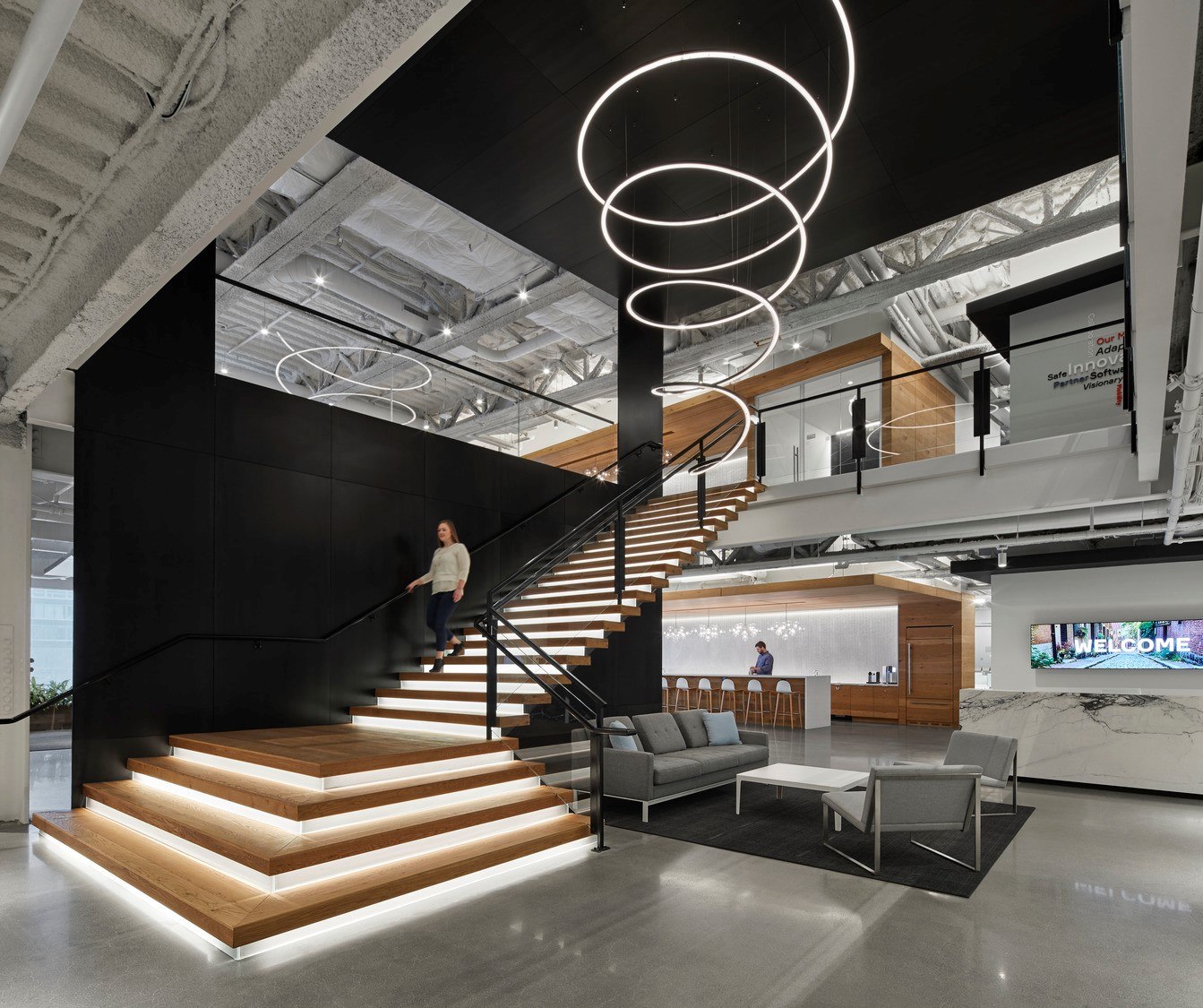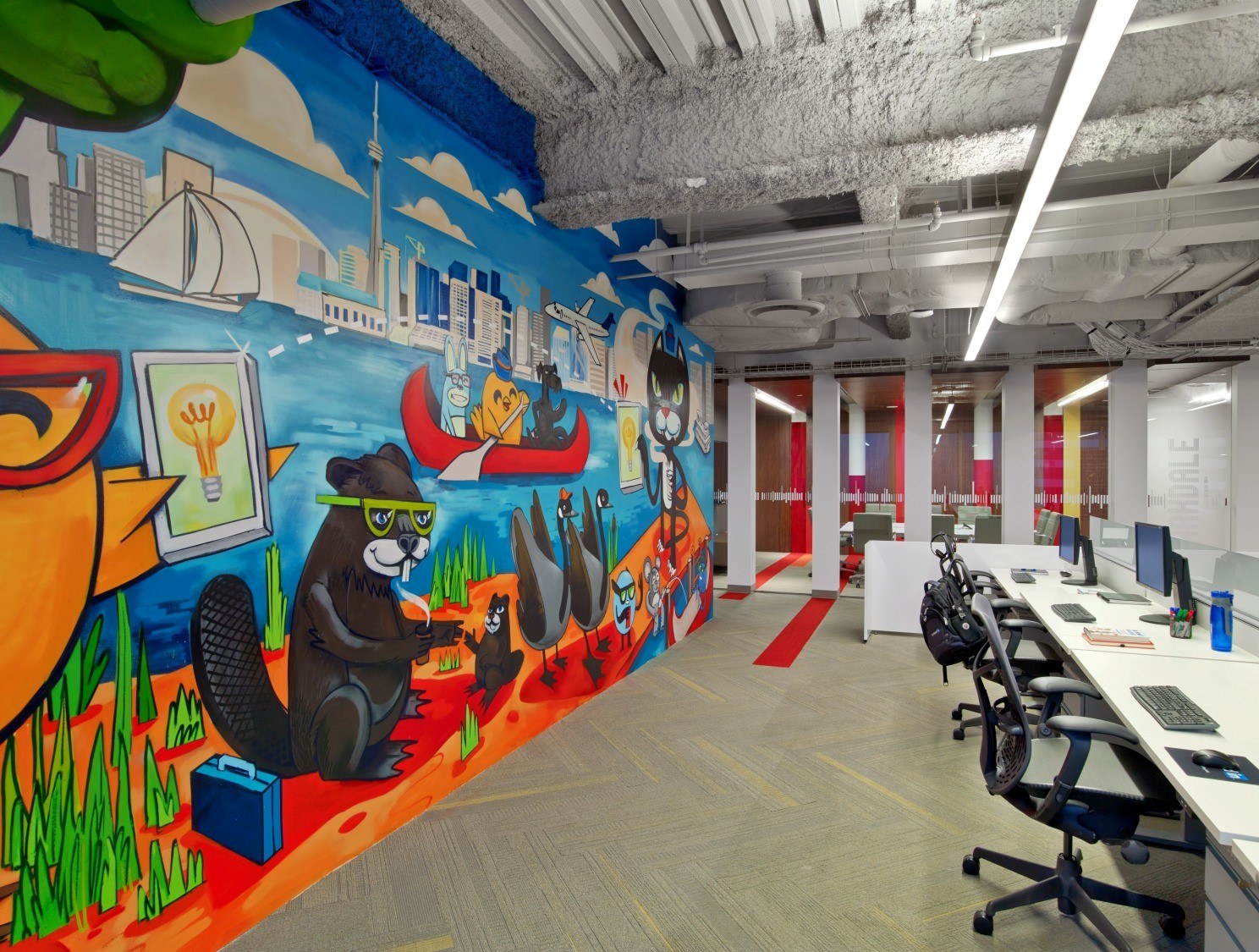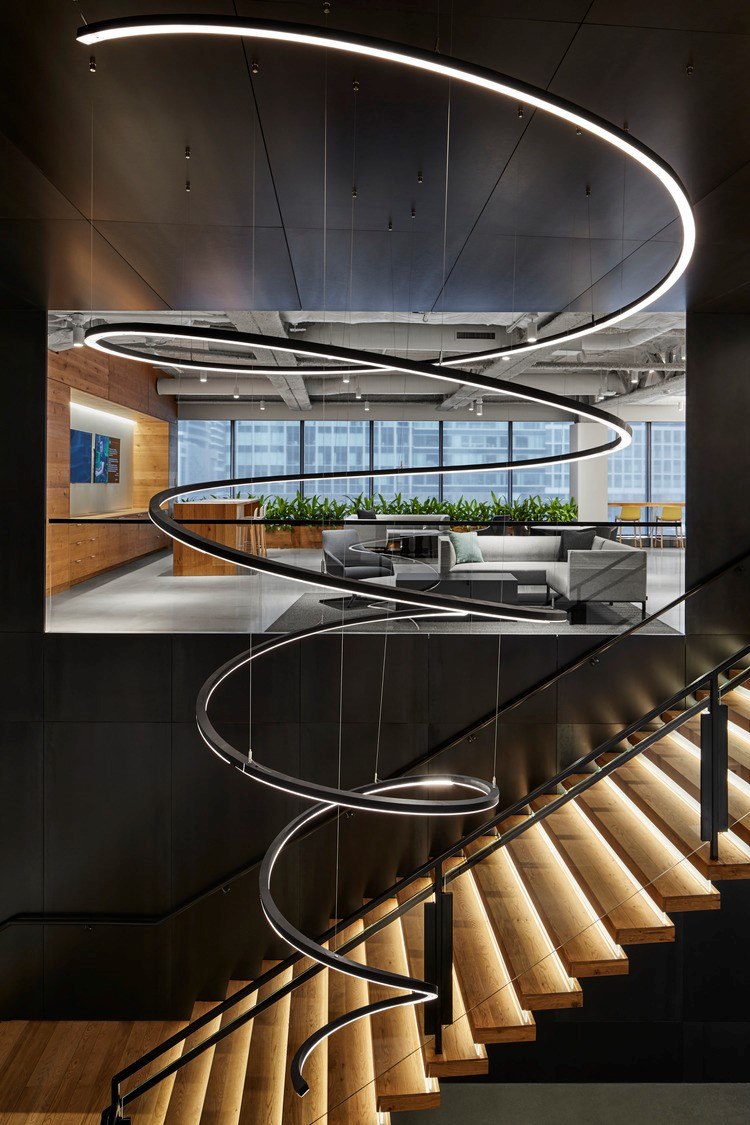By Shavana Green | Experiential Graphic Designer

The works of Alexander Calder and Bruno Munari inspired this design. Confidential Client, Boston. Photography © Robert Benson.
From the meticulously analytical to the fantastic and conceptual, IA’s Experiential Graphic Design (EGD) team seeks inspiration from diverse perspectives and sources to create custom designs for IA clients.
Acknowledging the influence of the fine arts on design, the EGD team generates unique experiences that connect people to place. Our team collaborates to produce multi-discipline visual communications that include wall graphics, sculptural elements, and larger than life art installations that convey key messages and spark imagination. In short, we strive to make our clients’ wildest dreams a reality.
Case in point, while developing graphics for the LinkedIn Toronto office, Chicago-based Senior Director of Experiential Graphic Design Julie Maggos could barely contain her excitement in bringing local Toronto culture to the forefront at the company’s Canadian office. Graffiti artist Uber 5000, also known as Alan Ryan, conceptualized a truly fantastic mural which “focused on the urban and natural features of Toronto” while “incorporating the mission of LinkedIn’s core values to connect the world’s professionals.”

LinkedIn, Toronto. Photography © Eric Laignel.
Striving for an organic process that would allow the artist to put his mark on the piece, Maggos asked him to somehow express that the LinkedIn space was designed for the modern professional, who seeks a steady balance between work and leisure, and to also “bring the city and country life indoors.” Maggos sought to create a one-of-a-kind opportunity where both artist and client could enjoy the freedom to realize their vision. The results were exactly what the client was hoping for—an energetic and colorful but completely recognizable custom Toronto. When asked her secret for facilitating successful design and graphics, Maggos’ simply replied “flexibility.”

LinkedIn, Toronto. Photography © Eric Laignel.
Another fine art focused project, this one spearheaded by Boston designer Kara Siers, was created for a solution-focused confidential client “delivering software capabilities, advanced computing platforms, and networking architecture” to the public. Siers was inspired by the company’s research-focused, evidence-based formulas to “define the elements that connected their story across all disciplines, methods, and geographies, ultimately highlighting how these elements should be communicated throughout the space.”

The works of Alexander Calder and Bruno Munari inspired this design. Confidential Client, Boston. Photography © Robert Benson.
When asked how fine art applied to this particular design, Siers said she was inspired by the dynamic form and structure of works by Alexander Calder and Bruno Munari, which helped her conceptualize the sculptural staircase that extends from floor to ceiling and the spiral mobile. She went on to say that her vision was expressed by “carefully considering the geometry from multiple vantage points as well as focusing on the materiality.”
Fine art is an integral aspect of design and a driving force across all IA offices. We are inspired by those artists who came before us as well as our contemporaries. Through fine art we draw on the past while designing for the future.

